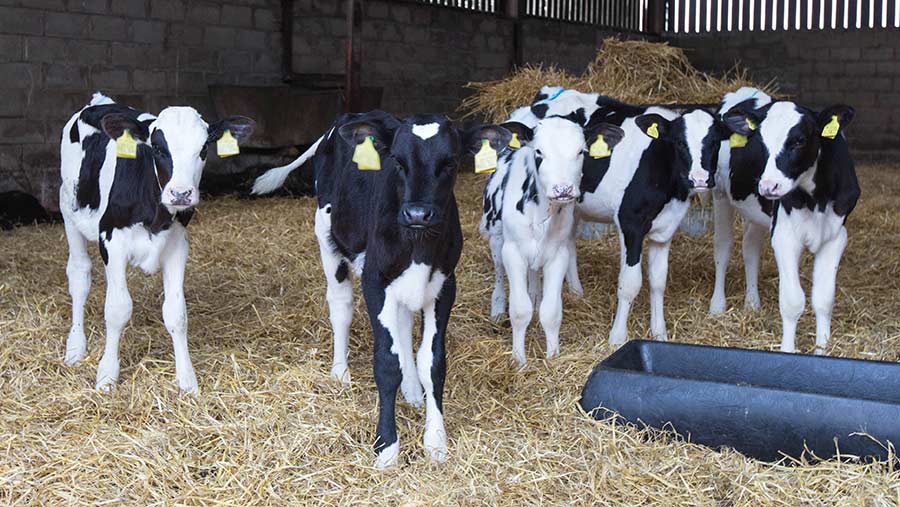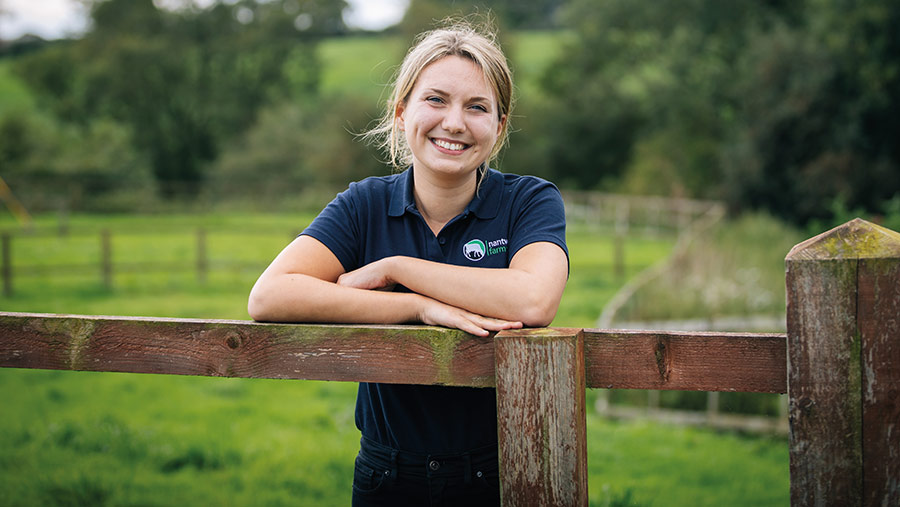Benefits of weighing dairy heifers to improve efficiency
 © Tim Scrivener
© Tim Scrivener Despite the availability of weighing equipment on the market, plus a growing number of feed companies and vet practices hiring scales or offering a weighing service, many dairy farmers still find it hard to justify the time involved and wonder what the payback is.
Yet routinely weighing heifers is not just about finding underweight animals. The real benefit comes from data analysis and using it to get groups, or individuals, back on track.
Monitoring growth rates can control rearing costs.
See also: 12 tips on rearing heifers to last longer
And investing time and money in the first 12 months is more effective when growing stock are most efficient at feed conversion, rather than trying to solve a problem later on.
The gold standard, says Gwen Davies, vet at Nantwich Farm Vets, Cheshire, is to weigh monthly up to calving, every time heifers are handled for fly control or worming.
As a minimum, weighing at birth, weaning and quarterly will give enough information. But another key time is at four weeks.
This is an opportunity to spot poor growth if calves are not hitting 0.7kg/day before weaning.
“We know there is a benefit to weighing and it’s not just where there is an obvious problem with youngstock,” she says.
“Some farmers are switched on and want to reduce their rearing costs. They can also win if they look at improving first-lactation milk yield and first-lactation survivability.”
Weighing up the cost
However, at Nantwich Farm Vets, just four herds currently hire the practice scales, and Gwen is conscious that most farmers do not think they get a return on investment from weighing.
Any service for clients will have to justify the cost of a vet (£100-£140/hour) and a vet tech (£25-£40/hour) by producing greater efficiency or savings for the farm business, she admits.
“It’s helpful to get the perspective of an outsider, especially if growth rates are poor.
“They can look at disease, diet and stocking density, pick out the outliers in the data set and work out what’s going wrong before making changes. For instance, a heifer might have been treated for pneumonia three times.
“Growth rates can be skewed by birthweight and adult mature weight, so you have to weigh your adult cows to work out what your average daily liveweight gain should be for your own herd.”
Setting growth targets involves weighing 10-15 cows in their third lactation, not yet back in-calf.

Gwen Davies © Nantwich Farm Vets
However, Gwen says it is also critical to start with a calf birthweight. “We can see a massive variation in birth weights within a herd, for instance, if you get a heifer calf out of a heifer.
“If the average is 40kg, we can see a range of 32-45kg, which puts smaller calves at a disadvantage, and it can look as if they are underperforming.
“Or you could underestimate the growth rates of larger calves, especially on systems where they are flat-rate fed.”
Gwen is developing an easily accessible computer program that might convince more farmers to make use of their data.
This could be offered along with specific nutritional or veterinary advice to help make the best use of data on heifer weights.
Dairy heifer growth targets based on herd mature cow weight
- To calve at 24 months
- Reach 40% of mature bodyweight for puberty
- Reach 55% at 13 months for serving
- By calving, they need to be 90% of mature weight (including the calf)
